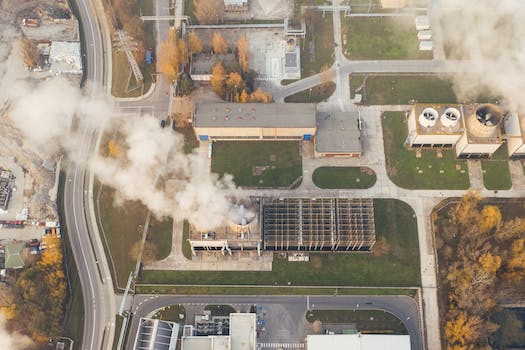

-
Table of Contents
"The Top 5 Deadliest Substances in the World: Unveiling the Dark Side of Nature."
Introduction
Introduction: The Top 5 Deadliest Substances in the World
In this article, we will explore the top five deadliest substances known to mankind. These substances possess extreme toxicity and can cause severe harm or even death when exposed to humans. From radioactive elements to potent neurotoxins, these substances are a grave threat to human health and safety. Understanding their lethal nature is crucial for ensuring proper precautions and safety measures are in place when dealing with them. Let's delve into the world of these deadly substances and explore their devastating effects.
Arsenic: A Silent Killer
Arsenic: A Silent Killer
When it comes to deadly substances, arsenic is undoubtedly one of the most notorious. This naturally occurring element has been responsible for countless deaths throughout history, earning its reputation as a silent killer. In this article, we will explore the dangers of arsenic and its devastating effects on the human body.
Arsenic is a highly toxic substance that can be found in various forms, including inorganic and organic compounds. It is commonly found in the environment, particularly in soil and water, and can easily contaminate food and drinking water sources. This widespread presence makes it a significant public health concern, as exposure to even small amounts of arsenic can have severe consequences.
One of the most common routes of arsenic exposure is through contaminated drinking water. In many parts of the world, particularly in developing countries, arsenic-contaminated water sources are a grim reality. Prolonged consumption of such water can lead to chronic arsenic poisoning, which manifests in a range of symptoms, including skin lesions, respiratory problems, and even cancer.
The effects of arsenic on the human body are far-reaching and devastating. When ingested, arsenic disrupts cellular processes, interfering with the body's ability to produce energy. This disruption can lead to a wide array of health problems, including cardiovascular diseases, diabetes, and neurological disorders. Furthermore, long-term exposure to arsenic has been linked to an increased risk of developing various types of cancer, such as lung, bladder, and skin cancer.
Perhaps one of the most alarming aspects of arsenic poisoning is its silent nature. Unlike other deadly substances that may cause immediate and noticeable symptoms, arsenic poisoning often goes undetected until it has already caused significant damage. This delayed onset of symptoms makes it challenging to diagnose and treat arsenic-related illnesses effectively.
Preventing arsenic poisoning requires a multi-faceted approach. First and foremost, ensuring access to clean and safe drinking water is crucial. Governments and organizations must invest in infrastructure and technologies that can effectively remove arsenic from water sources. Additionally, raising awareness about the dangers of arsenic and promoting safe practices, such as proper hygiene and food preparation, can help minimize exposure.
In regions where arsenic contamination is prevalent, regular monitoring of water sources is essential. This includes testing private wells and implementing measures to mitigate contamination. Furthermore, healthcare professionals must be educated about the symptoms and effects of arsenic poisoning to facilitate early detection and appropriate treatment.
In conclusion, arsenic is undeniably one of the deadliest substances in the world. Its widespread presence in the environment and its ability to silently wreak havoc on the human body make it a significant public health concern. The devastating effects of arsenic poisoning, ranging from chronic illnesses to an increased risk of cancer, highlight the urgent need for preventive measures and effective treatment options. By addressing the issue of arsenic contamination head-on, we can protect countless lives from this silent killer.
Botulinum Toxin: The Most Potent Neurotoxin

Botulinum toxin, also known as Botox, is widely recognized for its cosmetic applications in reducing wrinkles and fine lines. However, what many people may not realize is that botulinum toxin is also one of the most potent neurotoxins in the world. In fact, it is considered to be the deadliest substance known to mankind. This article will delve into the characteristics of botulinum toxin, its effects on the human body, and the reasons behind its lethal nature.
Botulinum toxin is produced by the bacterium Clostridium botulinum, which is commonly found in soil, water, and the intestines of animals. The toxin itself is a protein that disrupts the normal functioning of nerve cells, leading to paralysis. It achieves this by blocking the release of acetylcholine, a neurotransmitter responsible for transmitting signals between nerve cells and muscles.
The effects of botulinum toxin on the human body are devastating. When ingested or injected, the toxin spreads throughout the body, targeting the nervous system. Symptoms typically appear within 12 to 36 hours and include muscle weakness, blurred vision, difficulty swallowing, and respiratory failure. If left untreated, botulinum toxin can lead to death due to respiratory paralysis.
What makes botulinum toxin particularly lethal is its incredible potency. It is estimated that just one gram of the toxin could kill over one million people. To put this into perspective, a single teaspoon of botulinum toxin could potentially wipe out the entire population of a small city. This potency is due to the fact that botulinum toxin is approximately 40 million times more toxic than cyanide.
The lethal nature of botulinum toxin has raised concerns regarding its potential use as a bioweapon. In fact, it has been classified as a Category A bioterrorism agent by the Centers for Disease Control and Prevention (CDC). This classification reflects the toxin's ability to cause widespread illness, death, and panic if released intentionally.
Fortunately, the medical community has found ways to utilize botulinum toxin for therapeutic purposes while minimizing its lethal effects. Botox injections, for example, are commonly used to treat various medical conditions such as muscle spasms, migraines, and excessive sweating. By carefully controlling the dosage and administration of the toxin, healthcare professionals can harness its muscle-paralyzing properties for beneficial outcomes.
In conclusion, botulinum toxin, also known as Botox, is not only a popular cosmetic treatment but also one of the deadliest substances in the world. Produced by the bacterium Clostridium botulinum, this potent neurotoxin disrupts the normal functioning of nerve cells, leading to paralysis. Its incredible potency, estimated to be 40 million times more toxic than cyanide, makes it the most lethal substance known to mankind. While concerns about its potential use as a bioweapon persist, the medical community has found ways to utilize botulinum toxin for therapeutic purposes, demonstrating the delicate balance between its deadly nature and its potential benefits.
Ricin: Deadly Plant Protein
Ricin: Deadly Plant Protein
When it comes to deadly substances, few can match the potency of ricin. Derived from the castor bean plant, ricin is a protein that has gained notoriety for its lethal effects. In this article, we will explore the top five deadliest substances in the world, with ricin taking center stage.
First discovered in 1888 by German scientist Peter Hermann Stillmark, ricin quickly became a subject of interest due to its toxic properties. Found in the seeds of the castor bean plant, ricin is a natural defense mechanism for the plant, protecting it from predators. However, this defense mechanism can prove fatal to humans if ingested, inhaled, or injected.
Ricin is classified as a protein toxin, and it acts by inhibiting protein synthesis within cells. This disruption leads to cell death and ultimately organ failure. The potency of ricin is staggering, with just a few milligrams being enough to kill an adult human. To put this into perspective, a single castor bean contains enough ricin to kill several people.
The symptoms of ricin poisoning can vary depending on the route of exposure. If ingested, symptoms may include nausea, vomiting, diarrhea, and abdominal pain. Inhalation of ricin can lead to respiratory distress, coughing, and difficulty breathing. In cases where ricin is injected, symptoms may include fever, muscle pain, and organ failure.
One of the most infamous cases involving ricin occurred in 1978 when Bulgarian dissident Georgi Markov was assassinated in London. Markov was walking across Waterloo Bridge when he felt a sharp pain in his leg. Unbeknownst to him, he had been injected with a ricin-filled pellet fired from an umbrella. Within days, Markov fell gravely ill and died as a result of ricin poisoning.
Another notable incident involving ricin occurred in 2013 when letters laced with ricin were sent to then-President Barack Obama and other government officials. Although no one was harmed in this incident, it highlighted the potential for ricin to be used as a weapon of bioterrorism.
Due to its deadly nature, ricin has garnered attention from both the scientific community and law enforcement agencies. Research into ricin has focused on developing antidotes and treatments for ricin poisoning. However, due to its high toxicity and the lack of a specific antidote, ricin remains a formidable threat.
In conclusion, ricin is undoubtedly one of the deadliest substances in the world. Derived from the castor bean plant, this protein toxin has the ability to disrupt protein synthesis within cells, leading to organ failure and death. With just a few milligrams being enough to kill an adult human, ricin poses a significant threat. Its use in high-profile assassinations and attempted acts of bioterrorism has further highlighted its lethal potential. As scientists continue to study ricin and develop countermeasures, it is crucial to remain vigilant and aware of the dangers posed by this deadly substance.
Q&A
1. What are the top 5 deadliest substances in the world?
- Botulinum toxin
- Sarin
- VX nerve agent
- Ricin
- Tetrodotoxin
2. What is botulinum toxin?
- Botulinum toxin is a neurotoxic protein produced by the bacterium Clostridium botulinum. It is the most potent toxin known to humans and can cause botulism, a severe and potentially fatal illness.
3. What is tetrodotoxin?
- Tetrodotoxin is a potent neurotoxin found in certain species of pufferfish, as well as other marine animals. It blocks sodium channels in nerve cells, leading to paralysis and potentially death if consumed in sufficient quantities.
Conclusion
In conclusion, the top 5 deadliest substances in the world are:
1. Botulinum toxin: Considered the most toxic substance known, it causes botulism and can lead to paralysis and respiratory failure.
2. Sarin: A nerve agent that disrupts the nervous system, causing paralysis and potentially leading to death.
3. Polonium-210: A highly radioactive substance that emits alpha particles, causing severe damage to cells and organs.
4. Mercury: A heavy metal that can cause severe neurological damage and organ failure when ingested or inhaled.
5. Ricin: A potent toxin derived from castor beans, it can cause organ failure and death if ingested or injected.











